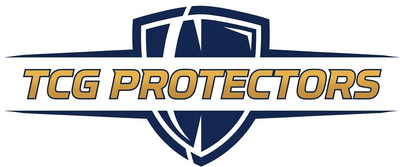In the intricate dance of Magic: The Gathering, nearly every move is a conversation. You cast a spell, and it goes on the stack, giving your opponent a chance to respond. An ability triggers, and it too goes on the stack, opening a window for interaction. This call-and-response rhythm, governed by the rules of priority and the stack, is the bedrock of the game's strategic depth.
But what if you could make a move that your opponent couldn't respond to? What if you could take an action that simply happens, bypassing the stack entirely and leaving no window for interaction? These moves exist, and they are known as Special Actions.
Special Actions are a unique and often misunderstood category of game moves that do not use the stack. They are the exceptions to the fundamental rule of "everything can be responded to." Understanding what they are, why they exist, and how to leverage them is a critical step in moving from an intermediate to an advanced level of play. They represent moments of certainty in a game of variables, and knowing when you can act with impunity is a powerful strategic advantage.
This guide will pull back the curtain on these unique game mechanics. We will provide a definitive list of what constitutes a Special Action, explore the design philosophy behind why they bypass the stack, and analyze the profound strategic implications of these un-respondable game-changers.
What Defines a Special Action in MTG?

The defining characteristic of a Special Action is simple: it does not use the stack. Because it doesn't use the stack, it cannot be responded to. It happens instantaneously the moment a player with priority chooses to take it. There is no window for an opponent to cast a or a . The action is simply taken, and the game state changes immediately.
It's crucial to distinguish Special Actions from abilities that say they "can't be countered." A spell like cannot be countered, but it does use the stack. When you cast it, your opponent still gets priority and can respond with other instants, perhaps by casting to save their board. A true Special Action offers no such window.
A player can take a Special Action any time they have priority, just like casting an instant. The key difference is the resolution.
The Comprehensive List of MTG Special Actions

While there are many unique mechanics in Magic, the list of official Special Actions is specific and finite. Here are the most common ones you will encounter.
1. Playing a Land: This is the most frequent Special Action in any game of Magic. During your main phase, when the stack is empty, you can play a land from your hand. This action does not use the stack. Your opponent cannot "counter" your land drop. The land simply enters the battlefield, and you get priority again. (Note: Abilities that trigger when a land enters the battlefield, like landfall, do use the stack after the fact).
2. Turning a Face-Down Creature Face Up (Morph & Megamorph): Creatures with the morph ability are cast face-down as 2/2 creatures. At any time you have priority, you can pay the morph cost to turn the creature face up. This is a Special Action. It does not use the stack, and it cannot be responded to. Your opponent cannot use a on your 2/2 morph creature in response to you turning it face up into a massive 6/6 dragon. By the time they get priority, it's already a dragon.
3. Suspending a Card: For cards with the Suspend mechanic, the act of exiling the card from your hand and putting time counters on it is a Special Action. You pay the suspend cost, and the card is immediately exiled. Your opponent cannot counter the act of suspending. They will, however, get a chance to counter the spell when the last time counter is removed and you cast it from exile without paying its mana cost, as that action does use the stack.
4. Taking a "Plot" Action: Introduced in Outlaws of Thunder Junction, plotting a card is a special action. You pay the plot cost and exile the card from your hand. This action does not use the stack. You can then cast the plotted card on a later turn without paying its mana cost as a sorcery.
5. Ignoring an Effect to Move a Card to a Public Zone (Foretell): The Foretell mechanic allows you to pay two mana to exile a card from your hand face down. This is a Special Action. It happens immediately and cannot be responded to. You can then cast the foretold card on a later turn for its foretell cost.
6. Some State-Based Actions: While not something a player chooses to do, it's worth noting that state-based actions (like a creature with lethal damage dying, or a player with zero life losing the game) also do not use the stack. They are checks the game performs constantly.
The "Why": Design Philosophy Behind MTG Special Actions

Why do these exceptions exist? The reasons are rooted in smooth gameplay and the prevention of tedious interactions.
-
Game Flow and Pace: Imagine if every land drop used the stack. The first few turns of every single game would be a monotonous cycle of "Play land, pass priority," "Okay, resolves," "Pass back." It would grind the game to a halt. Making land drops a Special Action streamlines the foundational process of building mana.
-
Enabling "Surprise" Mechanics: The power of the Morph mechanic is its "gotcha" moment. It's the thrill of revealing that your unassuming 2/2 is actually a game-ending threat. If an opponent could respond to you flipping your creature, the mechanic would lose its punch. A simple removal spell would nullify the entire strategy. Making it a Special Action preserves the intended surprise and strategic depth.
-
Preventing "Feel-Bad" Scenarios: Suspend and Foretell are mechanics designed around delaying a powerful effect for a later payoff. If an opponent could simply counter the act of you setting up your future play, these mechanics would be incredibly weak and frustrating. By making the setup a Special Action, the design ensures that the core mechanic functions as intended, while still allowing for interaction on the back end when the spell is finally cast.
Strategic Implications: Wielding Certainty as a Weapon in MTG

Understanding Special Actions is not just about rules knowledge; it's about leveraging moments of absolute certainty in your strategy.
The Inevitability of Lands
The fact that land drops are un-respondable is a cornerstone of control and ramp strategies. When you have a land that has a powerful ability, like , your opponent cannot stop it from hitting the battlefield. They can counter the ability when you activate it, but the permanent itself is guaranteed to resolve. This makes utility lands incredibly reliable.
The Power of the Flip
When playing with or against a morph deck, the Special Action rule is the entire game. As the morph player, you can attack your 2/2 into a larger creature, and if your opponent doesn't block, you can flip it into a massive creature after blockers are declared but before damage is dealt, getting in a huge, unexpected hit.
Conversely, as the opponent, you must respect the "threat of activation." You have to make your decisions before the flip happens. If you want to remove a face-down creature, you must do so during the main phase or the beginning of combat step. Once attackers are declared, you've given the morph player a window to use their Special Action to their advantage.
Setting Up Uncounterable Threats
Mechanics like Foretell can be used to bait out counterspells. By foretelling a card, you are investing mana into a future play. A savvy opponent might be tempted to counter a less important spell you cast later, fearing the powerful card you have waiting in exile. You can use this to your advantage, forcing them to use their interaction on lesser threats while your true, foretold bomb is waiting to be cast on a future turn, perhaps when they are tapped out.
Conclusion: The Rules Behind the Rules in Magic: The Gathering
Magic: The Gathering is a game defined by its deep and interactive ruleset. The stack is the arena where most of the game's battles are fought. But the Special Actions are the moves that bypass the arena entirely. They are the moments of certainty, the actions that just happen, reshaping the battlefield in an instant.
By internalizing what these actions are and why they exist, you add a new layer to your strategic thinking. You learn to recognize the windows where your opponent is vulnerable and the moments where your own actions are guaranteed to succeed. In a game of constant variables and interaction, the ability to make a move that is truly un-respondable is one of the most powerful tools a Planeswalker can possess.
For more MTG rules guides, check out our articles on Magic The Gathering formats: rules , Magic Standard decks: mastering the MTG meta, MTG Commander deck building guide, and MTG guide to stacking triggers.














Leave a comment